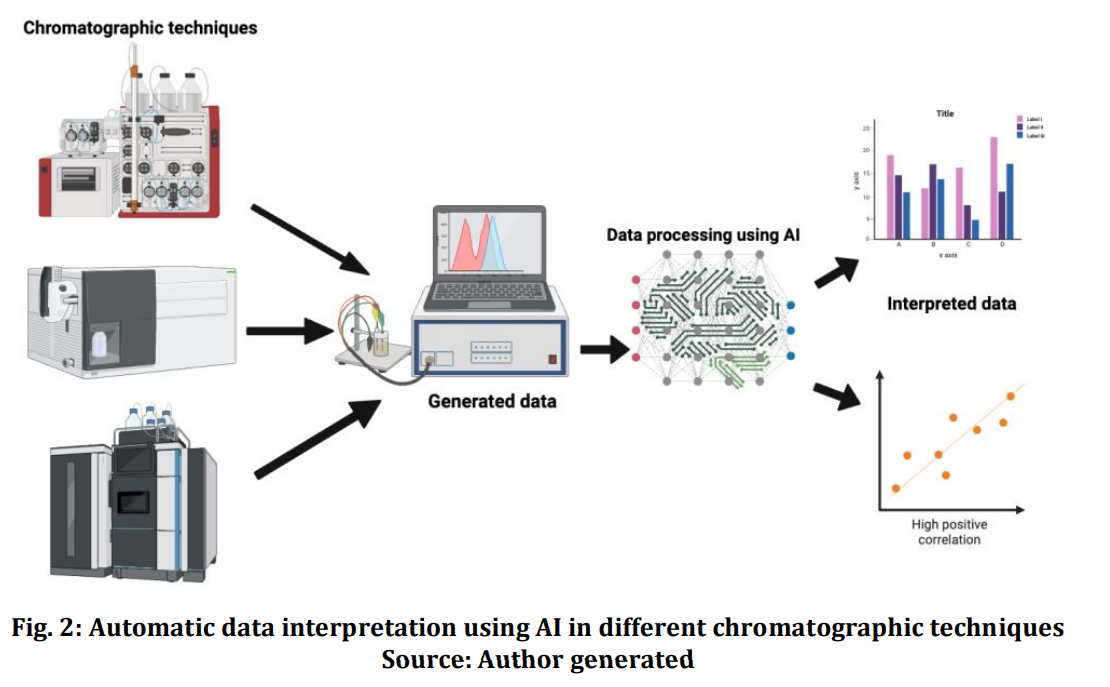The convergence of machine learning (ML) and chromatography has introduced groundbreaking innovations in chemical analysis, enhancing accuracy, efficiency, and automation. As chromatography plays a critical role in fields like pharmaceuticals, environmental monitoring, and food safety, the adoption of AI-driven predictive models is revolutionizing traditional methodologies.
How Machine Learning is Transforming Chromatography

Machine learning algorithms can process vast amounts of chromatographic data to predict, optimize, and automate separation processes. Key applications include :
1. Predictive Modeling for Retention Times
- ML models can accurately predict retention times in liquid chromatography (LC) and gas chromatography (GC) based on molecular structures and experimental conditions.
- Deep learning techniques analyze datasets from previous experiments to suggest optimal separation parameters, reducing trial-and-error experiments and improving efficiency.
- Example: A study published in Analytical Chemistry demonstrated how artificial neural networks (ANNs) outperformed traditional equations in retention time prediction, significantly improving method development.
2. Automated Method Development and Optimization
- AI-driven algorithms help automate the selection of mobile phases, column conditions, and flow rates for optimal separations.
- Bayesian optimization and reinforcement learning methods allow scientists to fine-tune chromatographic settings dynamically, leading to higher-resolution separations with fewer resources.
- Example: Researchers at MIT developed an ML-powered system that can optimize HPLC (High-Performance Liquid Chromatography) conditions in minutes instead of days, drastically accelerating drug development.
3. Real-Time Anomaly Detection and Quality Control
- Anomaly detection models using ML can identify deviations in chromatographic runs, preventing errors before they affect results.
- These models analyze peak shapes, retention time shifts, and signal noise, ensuring higher reproducibility in analytical chemistry.
- Example: AI-enhanced quality control in pharmaceutical manufacturing reduces batch failures and improves compliance with regulatory standards like FDA and EMA guidelines.
4. Data Processing and Peak Deconvolution
- Chromatographic data is complex, with overlapping peaks often complicating analysis. Machine learning algorithms like convolutional neural networks (CNNs) and support vector machines (SVMs) can deconvolute co-eluting peaks, improving accuracy in multi-component analysis.
- Example: Google DeepMind has collaborated with analytical scientists to develop ML tools that can separate co-eluting peaks more precisely than traditional deconvolution software.
Benefits of Machine Learning in Chromatography
✔ Reduced Analysis Time – AI accelerates method development and decision-making, allowing faster turnaround times in research and industry.
✔ Cost-Effective – Reduces the need for expensive reagents and extensive trial-and-error experimentation.
✔ Higher Accuracy & Precision – AI minimizes human error and optimizes separation conditions for better reproducibility.
✔ Scalability – Machine learning models continuously improve with more data, making them ideal for high-throughput screening applications.
Future Prospects: AI-Powered Chromatography in Drug Discovery and Beyond
With the rise of automated laboratories and robotic systems, AI-driven chromatography is set to play a key role in personalized medicine, forensic science, and environmental monitoring. Self-learning chromatographic systems capable of real-time adjustments will further improve accuracy and efficiency, paving the way for next-generation analytical techniques.
📢 Stay Updated on AI in Chromatography
For more updates on machine learning applications in chromatography, follow leading journals like Analytical Chemistry, Journal of Chromatography, and Nature Machine Intelligence.